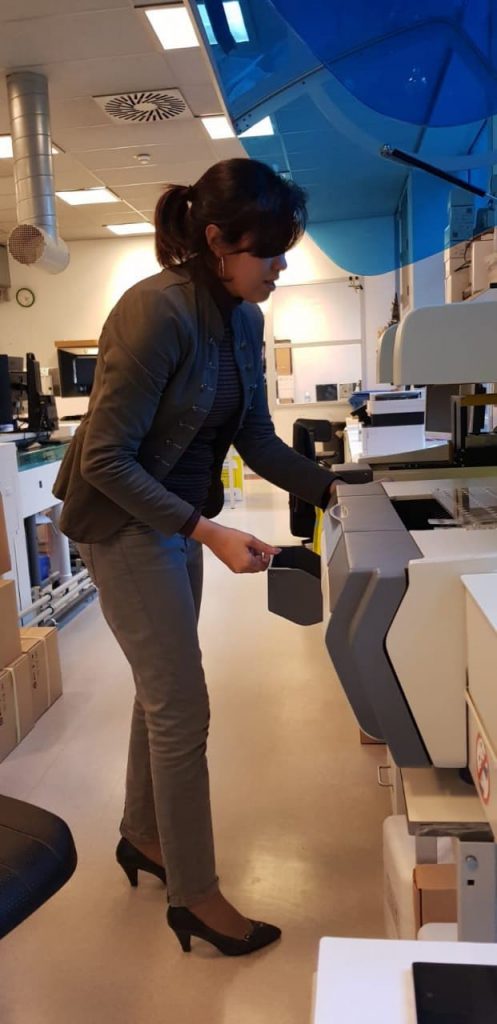Giardia duodenalis is a serious gastrointestinal parasite of people and animals throughout the globe. It can also be of curiosity from an evolutionary perspective because it possesses many options which can be distinctive amongst the eukaryotes, together with its distinctive binucleate cell construction. While genomic evaluation of a small quantity of isolates has supplied worthwhile insights, efforts to know the epidemiology of the illness and the inhabitants biology of the parasite have been restricted by the molecular instruments at the moment accessible.
We assessment these instruments and assess the affect of reasonably priced and speedy genome sequencing programs more and more being deployed in diagnostic settings. While these applied sciences have direct implications for public and veterinary well being, they will even enhance our understanding of the distinctive biology of this fascinating parasite. Isolating high-quality DNA is crucial for a number of purposes in molecular biology and genomics.
Performing whole-genome sequencing in crops and improvement of diminished illustration genomic libraries for genotyping require exact customary on DNA in phrases of focus and purity. For screening massive populations it’s important to extend the extraction throughput at reasonably priced prices. In this chapter a home made protocol is supplied that is ready to isolate in 96-well plates 198 samples of DNA in a single extraction. The technique has been validated in tomato and pepper and could be utilized in a number of vegetable species.
The isolation of nucleic acids from a organic pattern is a crucial step for a lot of molecular biology purposes and medical diagnostic assays. This chapter describes an environment friendly protocol utilizing established acidic CTAB (with a pH worth of 5.zero to six.8) based mostly extraction technique for isolation and/or purification of excessive molecular weight genomic DNA from a spread of recent and tough sources from plant, animal, fungi, and soil materials. This protocol is appropriate for a lot of sequencing and genotyping purposes, together with large-scale pattern screening.
Development of Rapid Pharmacogenomic Testing Assay in a Mobile Molecular Biology Laboratory (2MoBiL)
Pharmacogenomics is quickly assuming an integral half in trendy well being care. Still, its broad applicability depends on the feasibility of performing pharmacogenomic testing in all scientific settings, together with in distant areas or resource-limited settings with finances restrictions. In this examine, we describe the improvement and feasibility of speedy and dependable pharmacogenomics assays utilizing a conveyable molecular biology laboratory, specifically the 2MoBiL (Mobile Molecular Biology Laboratory).
More exactly, we show that the genotyping of rs4149056, situated inside SLCO1B1, could be effectively and reliably carried out utilizing the 2MoBiL transportable laboratory and traditional benchtop laboratory gear and a gold customary genotyping technique (KASP assay) as straight comparable methodologies.Taking under consideration the compact dimension of 2MoBiL, which straight and positively impacts on its portability, and the excessive accuracy achieved, we conclude that the 2MoBiL-based genotyping technique is warranted for additional research in scientific practices at distant areas and resource-limited in addition to time-constrained planetary well being settings.
To contextualize the broader and potential future purposes of 2MoBiL, we emphasize that genotyping of a restricted set of clinically related single-nucleotide polymorphisms is usually a typical endpoint of genomics and pharmacogenomics discovery and translational analysis pipeline. Hence, speedy genotyping by 2MoBiL could be a vital catalyst for world implementation of pharmacogenomics and customized medication in the clinic. Cadmium (Cd) toxicity is a critical menace to future meals safety and well being security.
To determine genetic elements contributing to Cd uptake in wheat, we carried out a genome-wide affiliation examine with genotyping from 90Okay SNP array. A spring wheat variety panel was planted below regular circumstances and Cd stress (50 mg Cd/kg soil). The affect of Cd stress on agronomic traits ranged from a discount of 16% in plant peak to 93% in grain iron content material.
Individual genotypes confirmed a substantial variation for Cd uptake and translocation subdividing the panel into three teams: (1) hyper-accumulators (i.e. excessive Leaf_Cd and low Seed_Cd ), (2) hyper-translocators (i.e. low Leaf_Cd and excessive Seed_Cd ), and (3) reasonable traces (i.e. low Leaf_Cd and low Seed_Cd ).

Molecular epidemiology of leprosy: An replace
Molecular epidemiology investigations are notoriously difficult in the leprosy area primarily as a result of the inherent traits of the illness in addition to its but uncultivated causative brokers, Mycobacterium leprae and M. lepromatosis. Despite vital developments in understanding the biology of leprosy bacilli by genomic approaches, the actual mechanisms of transmission continues to be unclear and the elements underlying pathological variation of the illness in completely different sufferers stay as main gaps in our information about leprosy. Despite these difficulties, the final 20 years have seen the improvement of genotyping procedures based mostly on PCR-sequencing of goal loci in addition to by the genome-wide evaluation of an growing quantity of geographically various isolates of leprosy bacilli.
[Linking template=”default” type=”products” search=”Agarose High EEO for molecular biology” header=”3″ limit=”130″ start=”2″ showCatalogNumber=”true” showSize=”true” showSupplier=”true” showPrice=”true” showDescription=”true” showAdditionalInformation=”true” showImage=”true” showSchemaMarkup=”true” imageWidth=”” imageHeight=””]
This has supplied a basis for molecular epidemiology research which can be bringing a greater understanding of pressure evolution related to historical human migrations, and phylogeographical insights about the unfold of illness globally. This assessment discusses the benefits and downsides of the important instruments accessible for molecular epidemiological investigations of leprosy and summarizes numerous strategies starting from PCR-based genotyping to genome-typing methods. We additionally describe their important purposes in analyzing the short-range and long-range transmission of the illness. Finally, we summarise the present gaps and challenges that stay in the area of molecular epidemiology of leprosy.

